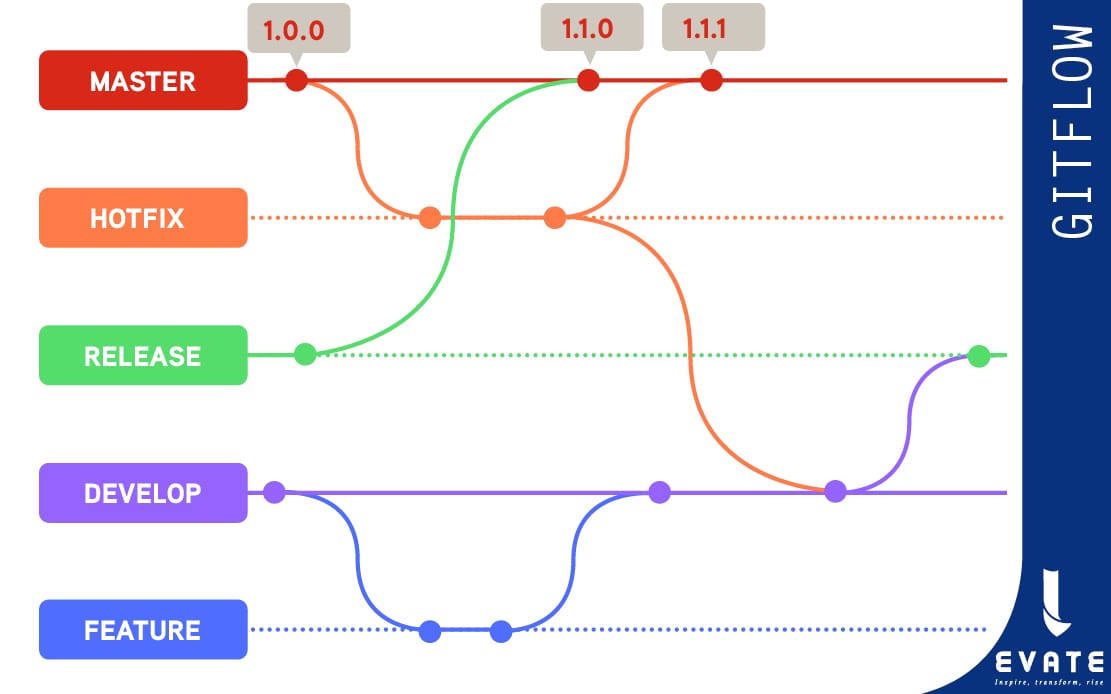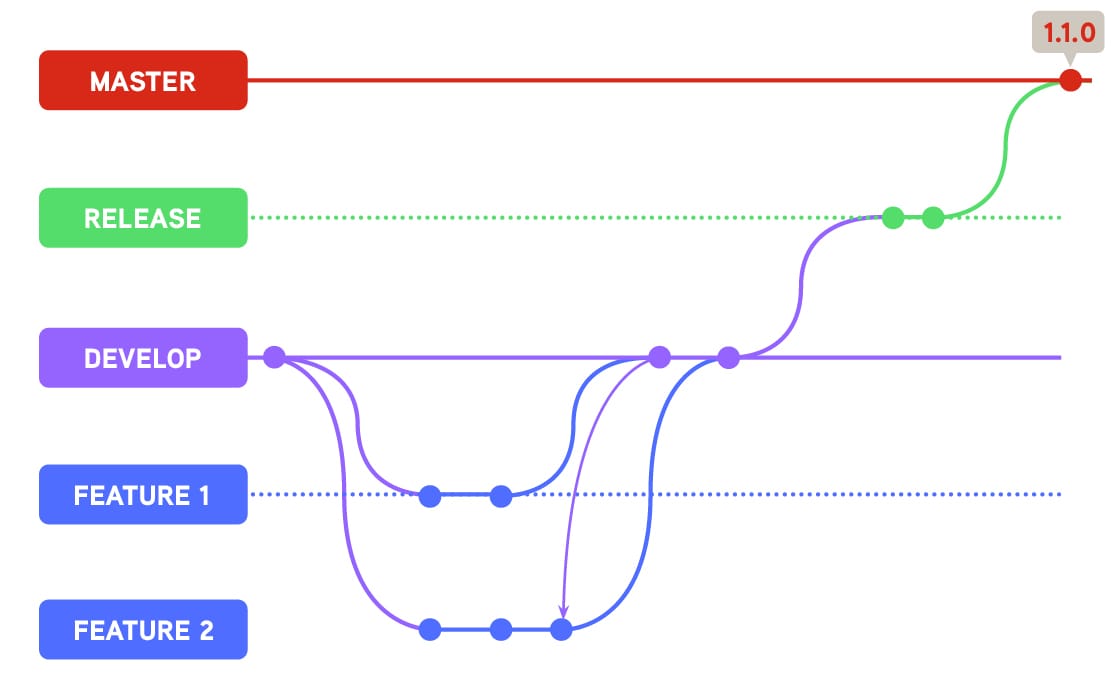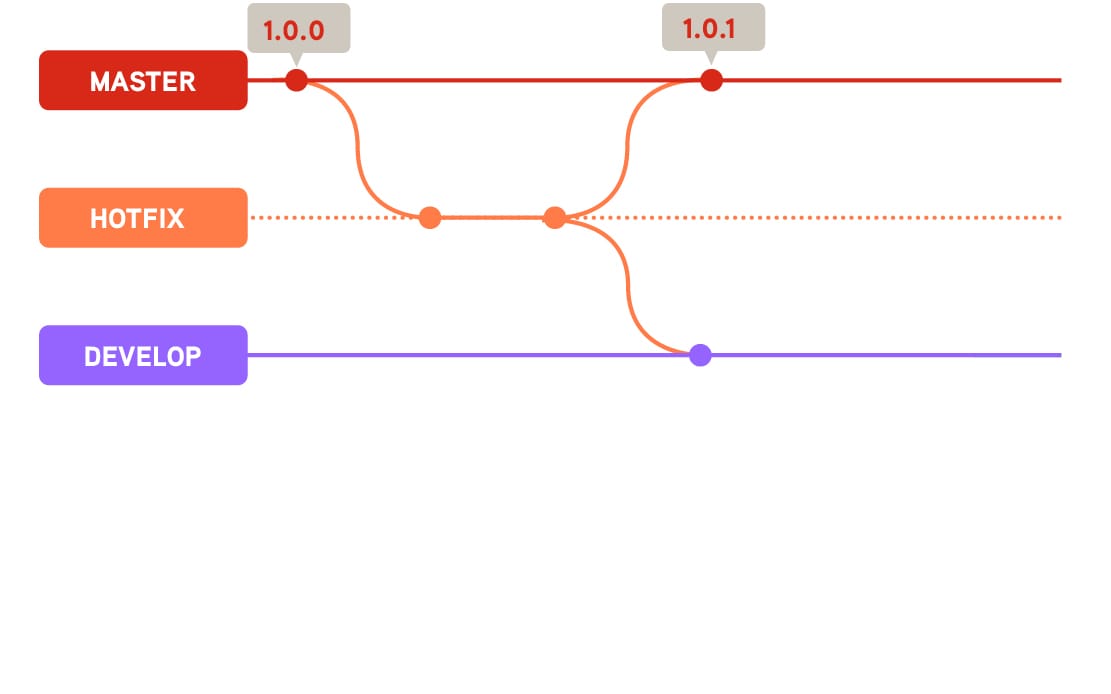MASTER YOUR DELIVERY WITH GITFLOW

Gitflow architecture is a branching management model in a Git project that allows for a clear and efficient organization of development, facilitating version management and feature deployment. This model was popularized by Vincent Driessen in 2010 and is now widely adopted in many software development projects. It relies on branches dedicated to specific phases of development, enabling better control of deliverability while ensuring a smooth development cycle.
Principle of Gitflow Architecture
Gitflow revolves around several types of branches, each serving a specific role in the project lifecycle. Here are the main branches used in this approach:
- Master (or Main) Branch: This is the main branch of the project, which always contains a stable version ready for production. It represents the state of the production environment. No direct changes should be made here without going through a rigorous validation process, often through release or hotfix branches.
- Develop Branch: This branch serves as the main source of development. New features and modifications are integrated here after they have been validated. Once the developments are stable, the Develop branch can be merged into Master for a new release.
- Feature Branches: Each new feature or improvement is developed on a dedicated branch from Develop. Once the feature is complete and validated (via tests and code reviews), it is merged back into Develop.
- Release Branches: When a new product version is ready to be deployed, a release branch is created from Develop. This branch is used for final bug fixes, last-minute adjustments, and preparation for production. Once validated, it is merged into both Main (for production release) and Develop (to maintain continuity of changes).
- Hotfix Branches: Sometimes, it is necessary to apply urgent fixes to the Master branch in production without waiting for the next release cycle. A hotfix branch is created from Main to correct the bug and is merged into both Main and Develop once the fix is applied.
Best Practices for Branch Management with Gitflow
Adopting a Gitflow architecture involves following certain best practices to ensure process efficiency:
- Short and Focused Branches: Each branch should have a clear goal. For instance, a feature branch should only contain changes related to that particular feature. This isolates developments and avoids unnecessary conflicts.
- Frequent Merging: To avoid major conflicts when merging branches, it is recommended to merge feature branches into Develop frequently. This keeps the codebase relatively up-to-date and helps detect issues early in the development cycle.
- Code Reviews and Automated Tests: Before any merge into a main branch (like Develop or Master), the code should undergo a code review and automated tests to ensure code quality and stability.
- Using Tags for Versioning: In Gitflow, it is common to use Git tags to mark deployed versions. For example, a stable version merged into Main after a release can be tagged with a version number (v1.0, v2.1, etc.).
- Ensuring Rigorous Quality Control: Release and hotfix branches are key moments in the development cycle where teams must be particularly vigilant about code quality. Manual testing, in addition to automated testing, is often necessary to ensure smooth delivery.
Master Your Deliverability with Gitflow
One of the key advantages of Gitflow is that it enables control over project deliverability at multiple levels:
- Clear Separation of Development Phases: Having distinct branches for development (Develop), new features (Feature), versions ready for deployment (Release), and urgent fixes (Hotfix) helps prevent mixing unfinished changes with production code. This improves project readability and management while minimizing the risk of introducing bugs into critical environments.
- Better Project Visibility: With Gitflow, each stage of development is clearly defined, allowing developers, project managers, and quality teams to have a precise view of what’s ready, what’s in development, and what’s in the final stages of fixing or testing.
- Strict Version Control: By isolating versions through release branches, Gitflow allows stricter control over what changes are included in a release before deployment. This ensures that only validated and tested features and fixes make it to the Main branch and are delivered to users.
- Facilitating Urgent Fixes: The existence of hotfix branches allows quick action in case of a critical bug in production. These fixes can be deployed without waiting for the next official release, while ensuring the changes are incorporated into the ongoing development flow.
- Improved CI/CD Process: Gitflow integrates well with a CI/CD (Continuous Integration and Continuous Deployment) approach. Dedicated branches make it easier to automate testing and deployment for each branch type, ensuring that every step is validated before it progresses through the pipeline.
Examples of Workflows
- Developing Features for a Minor Release

- Developing a Hotfix Patch

Conclusion
Gitflow architecture provides a solid framework for organizing and structuring branches in a Git project. By clearly separating development steps and encouraging frequent code integration, this method not only improves code quality and stability but also enhances control over product deliverability. It offers flexibility and responsiveness to adapt to urgent needs, changes, and be proactive. For development teams, Gitflow provides a clear structure, healthy merge practices, and a collaborative workflow, making it easier to keep a project up-to-date and production-ready.
